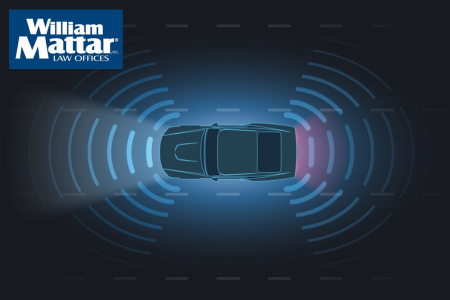

(844) - 444-4444

Advanced driver-assistance system technology, or ADAS, is designed to correct for human error by controlling a vehicle’s steering, acceleration, and deceleration. It can help save lives by sensing impending crashes in real time and avoiding collisions.
The Society of Automotive Engineers designates six levels of ADAS, ranging from No Driver Automation (Level 0) to Full Driving Automation (Level 5). This “taxonomy with detailed definitions for six levels of driving automation” can help describe the full range of driving automation that can be equipped on motor vehicles.
According to the SAE, this level of automation includes features that are essentially limited to providing warnings and momentary assistance. Examples include lane departure warning, blind spot warning, and automatic emergency braking. The human driver must continue to constantly supervise these support features, including braking, steering, or accelerating as needed to maintain safety.
This level of automation is similar to Level 0, but offers a heightened level of automation, including steering or brake/acceleration support to the driver. The driver must continue to drive and constantly supervise support features, including steering, braking, or accelerating as necessary to maintain safety. Features may include lane centering or adaptive cruise control.
This level of automation may include lane centering and adaptive cruise control at the same time. The driver must continue to remain engaged, even if their feet are off the pedals and they are not actively steering. The features are meant to support the driver, who remains in control.
The shift from Level 2 to Level 3 is an important one, according to the SAE. At Level 3 “You are not driving when these automated driving features are engaged – even if you are seated in the ‘driver’s seat.’” However, when the feature makes the request, “you must drive.” Level 3 features include, for example, “traffic jam chauffeur.” Level 3 features are not driver supported; instead, they can drive the vehicle “under limited conditions and will not operate unless all required conditions are met.”
Level 4 is the point at which automated driving features do not require the driver to take over driving. An example would include a local driverless taxis. According to the SAE, at this level of automation “pedals/steering wheel may or not be installed.”
This is the highest level of driving automation in the SAE taxonomy. The main difference between Level 4 and Level 5 is that the latter’s features drive the vehicle under all circumstances in all conditions. This is the highest possible level of automation, hence the name: full driving automation.
As you might expect, vehicles on the road are currently at the lowest levels of SAE’s taxonomy, but there are reports that the level of automation widely available to consumers may soon increase. While it is hoped that advanced driver-assistance systems will reduce the number of car accidents, the adoption of these new technologies will likely pose new challenges when it comes to ensuring or promoting roadway safety.
Nearly 40,000 people were killed in motor vehicle crashes in 2020. Current ADAS technology mitigates risk on the road. If you are injured in a crash despite or because of ADAS, call William Mattar, P.C. at 844-444-4444 to have our experienced attorneys evaluate your case.





